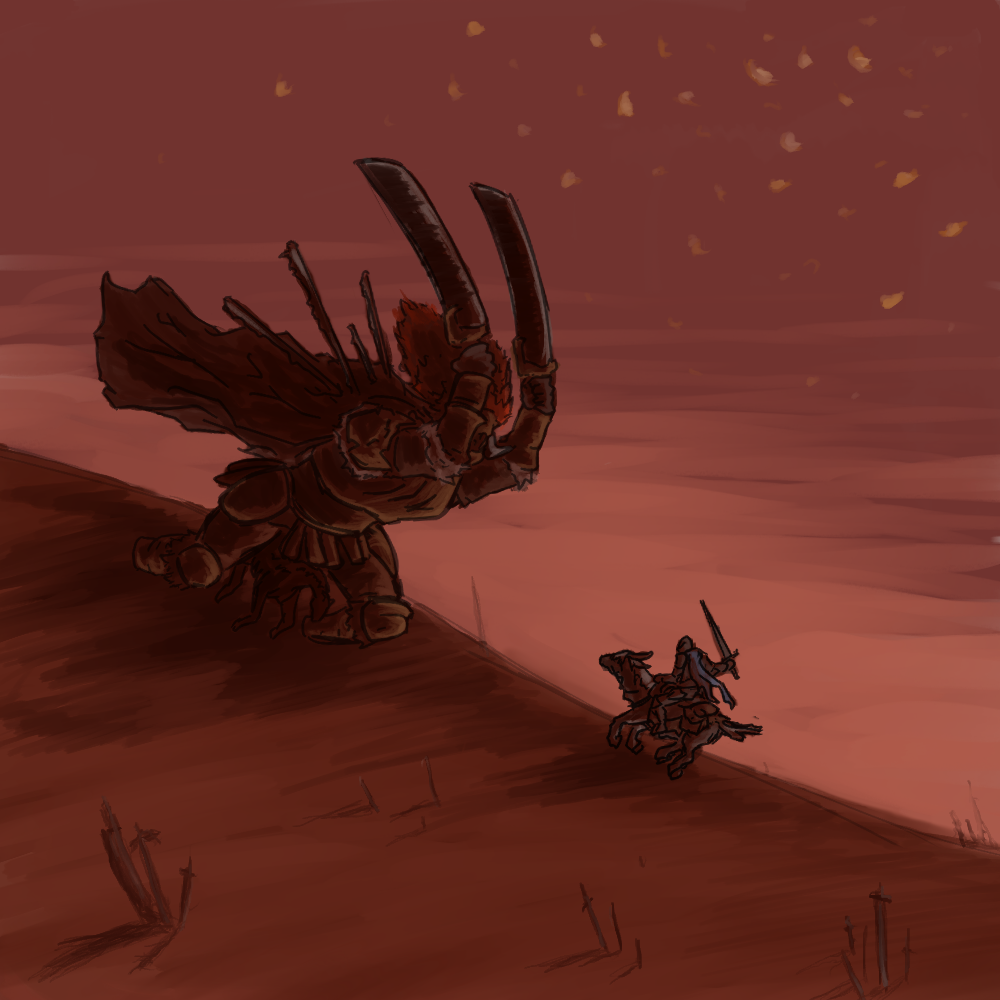Please visit response.fsu.edu for official FSU updates and resources.
Elden Ring is So Good it’s Confusing
 As the scale of video game experiences has grown, so has the scope of the fantasy they offer players. For many developers, it is no longer enough to guide a player through a linear journey from one level to the next. Instead, many recent releases have a player dropped into a singular, massive map for them to explore to their heart’s content, with various challenges, quests, and treasures scattered throughout. This format promises that players don’t just get to embody their favorite characters but inhabit a fully realized setting with no barriers to impede on how they wish to experience the game.
As the scale of video game experiences has grown, so has the scope of the fantasy they offer players. For many developers, it is no longer enough to guide a player through a linear journey from one level to the next. Instead, many recent releases have a player dropped into a singular, massive map for them to explore to their heart’s content, with various challenges, quests, and treasures scattered throughout. This format promises that players don’t just get to embody their favorite characters but inhabit a fully realized setting with no barriers to impede on how they wish to experience the game.
However, major releases over the past decade have revealed that the open world trend has its share of downsides. While these games tend to have lots of content, the quantity of things to do means that a singular mission may not be as well-crafted as it would have been for a linear game. As a result, some find playing through these dense open worlds to feel like a monotonous pattern of accomplishing small tasks while bouncing between waypoints on a map. Even critically praised open world games seem to have proven that a memorable non-linear experience requires some compromise. Metal Gear Solid V, the first open world game of its series, gave players an expanded toolbox and previously unseen freedom to approach its many stealth encounters with whatever tactics they chose — but the game lacked the focused, cinematic narrative of previous entries. Similarly, Halo Infinite embraced emergent, player-driven experiences with its open design but lacked the variety of biomes and environments seen in previous titles. Though they offer unique gameplay experiences, nearly every open world game seems to lose something in the decision to abandon a linear format.
Except, somehow, FromSoftware’s new action RPG, Elden Ring, manages to be an exception to this rule. The spiritual follow-up to the developer’s Souls series is massive, set within a sprawling open world filled with things to do, and yet the levels, encounters, and moments are as diverse and well-crafted as in any of the developer’s previous work.
Set in a war-torn fantasy landscape known as The Lands Between, the game puts the player in control of the Tarnished, an undead warrior tasked with reconstructing the titular Elden Ring, a magical artifact with the power to restore order to the world. To do so, the Tarnished must brave perilous dungeons, caves, and castles where they will challenge powerful demigods in intense boss fights. Once the player has been told their goal, they are free to roam the land, explore, and hunt down their targets at their leisure.
How does Elden Ring avoid the pitfalls of nearly every modern open world game? It’s important to note that its predecessors, the Dark Souls games, never followed the rules on what makes a popular action game. In those games, the player did not get to enjoy the power fantasy of most heroic video game protagonists, but instead was tormented as a frail wanderer forced to navigate a cursed, dangerous land. Little guidance was given to the player, and unforgiving level design and sparse checkpoints meant that many players gave up due to frustration before seeing the end of the game. However, the unique and often incredible world and monster designs, the feeling of uncertainty as to what lies ahead, and the satisfaction of overcoming the challenge of an intimidating boss or dungeon kept many players glued to these games despite their apparent unfriendliness.
Elden Ring continues all of these trends while finding new ways to break the rules of open world design. Primarily, despite its scale, the game does not provide a quest log or any organized way to keep track of the numerous side-adventures and locations you will discover. Your only guidance through the main story is vague dialogue from non-playable characters, glowing lights that point in the general direction of story progress, and a map. Within the opening moments of the game, you are released into an area of the open world near an optional boss that can take you down in seconds if he sees you. If you don’t pay attention, you can easily miss items, character interactions, and mechanics that are important to the game. This lack of hand-holding makes for an unwelcoming experience for many players, but also forces you to actively engage yourself in Elden Ring‘s world. You learn about your next objective not from bold text that appears on top of your screen, but by memorizing the layout of the continent and listening to directions from various NPCs. Depending on how far you explore off the beaten path, you may defeat the game’s major foes in an order that differs from how the quests guide you through the story. As a result, when you accomplish a feat or make a discovery, it feels like something you achieved on your own.
Another curse of modern open world games that Elden Ring overcomes is that of being bloated by having too much content. A common criticism of the genre is that the abundance of things to do in the open world forces the game to drag out longer than it needs to, while pressuring the player to engage with uninteresting side content that distracts from the primary adventure. Though Elden Ring is far larger than any prior Souls game, its breadth only serves to enhance the experience. The aforementioned lack of a quest log helps with this; with no formal listing of every side objective in the game, the player can explore the landscape naturally without being intimidated by an ever-growing to-do list in their pause menu. It also helps that the rewards for exploration are consistently exciting, ranging from treasure chests with new equipment to unique bosses, dungeons, or even access to entirely new (often terrifying) locations. In my experience, some of the most visually arresting areas and horrifying enemies have been found by exploring outside of the main quest. The game conditions you to want to check every nook and cranny of each area to see what you might find: it may lead you to a basement holding a grotesque, fleshy abomination, a new corner of the world where the sky is stained red, or an underground landscape where the glittering cave walls look like stars in outer space.
The last factor that makes Elden Ring stand out among its peers is the player themselves. As an RPG, Elden Ring allows you to custom-build your character and playstyle to suit what you find the most fun. That means that someone who levels up their sorcery-casting stat will likely have a different experience fighting one boss compared to someone who focuses on stats which allow them to wield heavy melee weapons, to list two of many build examples. Furthermore, the freedom allowed by the non-linear world means different players will make unique discoveries during their time exploring, resulting in exciting encounters with other cooperative and hostile players who wield weapons and abilities you’ve never seen. Varying player experiences not only add value to your personal playstyle, but bleed into real-life discussion as players explain their discoveries with each other and compare how they went about navigating the game’s intricate dungeons.
Where many non-linear games advertise the feeling of freedom in a massive world, they rarely allow players the freedom to play how they want or provide a world that is as deep as it seems to be. Somehow, with Elden Ring, FromSoftware has overcome the odds and crafted an experience that truly fulfills the open-world fantasy. The long-established golden order of the open world formula has been shattered. Maybe, in its ruin, the genre can reach its full potential.
Written by Yanni Spanolios
Art by Yanni Spanolios



